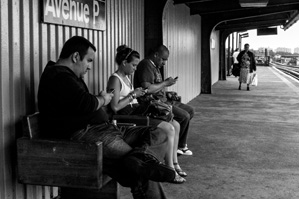Data, data everywhere

 The mobile internet is booming. For example, when was the last time you had a question and a cell phone at the same time and not looked up the answer immediately? We are fiends for immediate information. Likewise, we are fiends for sharing information with others. I went hiking this weekend and have already uploaded dozens of cell-snapped photos of the trip to share with friends and family.
The mobile internet is booming. For example, when was the last time you had a question and a cell phone at the same time and not looked up the answer immediately? We are fiends for immediate information. Likewise, we are fiends for sharing information with others. I went hiking this weekend and have already uploaded dozens of cell-snapped photos of the trip to share with friends and family.
Our mobile internet activity makes up 10% of all internet use. According to recent reports, 250 million photos are uploaded to Facebook every day, more than 72 video hours are uploaded to YouTube every minute, and 325 million files are saved to Dropbox every day. As if this weren’t a lot already, mobile internet activity is expected to increase 18-fold between 2011 and 2016.
But have you ever seen the Louis C K YouTube video of Louis C K on Conan, “Everything’s Amazing and Nobody’s Happy“? We already get frustrated that our emails don’t upload and our images don’t download fast enough. What’s gonna happen when there’s 18 times more stuff competing for the airwaves?
Tao Jin is a graduate student in the College of Computer Sciences here at Northeastern and together with his faculty advisor, Guevara Noubir, he is working to solve this problem by leveraging the residential Wi-Fi networks that are already available but are relatively underutilized.
In a project called Open Infrastructure, the CCS team has deployed 28 routers in urban areas in Boston and Houston, serving about 100 users, he said. With customized software running on each router, they’ve carried out a variety of measurements since February 2011 to collect over 72 million residential network usage data points.
Their initial data shows that the residential network is very inter-connected but underutilized. As such, it could be used to improve the efficiency of mobile internet use. The team is working on new networking mechanisms to harvest the idle bandwidth resources in local neighborhoods, and provide individual users with boosted performance.





